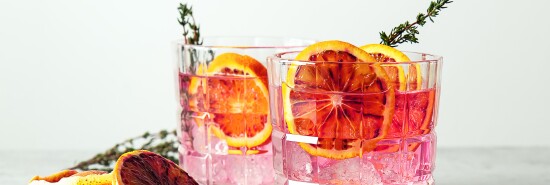
Pink gin
Eric Felten
The wildly innovative musician Frank Zappa had some weird notions about drinking — not that it should come as a surprise that Zappa had some weird notions about any particular thing.
To his credit, he abjured the illicit drugs that did so much damage to his generation: “There seems to be a consensus in America — since so many people, in all walks of life, use drugs — that a person can’t possibly be ‘normal’ if he doesn’t use them.” He was perpetually annoyed by the potheads who thought he was crazy not to be a pothead.
He was even more annoyed by the druggies who thought using the stuff gave them an all-purpose social pass. “Whatever heinous act they might have participated in the night before can be instantly excused by saying they were ‘high’ while they were doing it.”
Zappa’s theory was that corporations had decreed there be hundreds of millions of hapless and helpless stoners who never did anything other than buy useless stuff.
So far, so good (other than the part that posits a vast corporate conspiracy). But then, Zappa comes around to his theory about drinks and about beer especially. He believed that beer-drinking led to pseudo-military behavior. “Think about it — winos don’t march,” Zappa argued, whereas “beer drinkers are into things that are sort of like marching — like football.” One wonders if old Frank had spent much time in the Philly stands watching the beer-fueled mayhem.
Zappa suggested there was some sort of mystery chemical in beer that produced violent group behavior by men. Soccer hooliganism would certainly be an example of the phenomenon, though not evidence of what the mystery chemical is. It isn’t just alcohol, Zappa wrote, but various beer “components.”
“Go ahead and laugh,” Zappa said. But he predicted it would someday be found that hops and peculiar little “yeast creatures” joined forces to make people violent, “but only in groups.” Whiskey might make someone prone to fisticuffs, but beer encourages fighting en masse.
Which brings us near the point of this piece. Zappa noted that many people don’t just like a given drink. They define themselves by it. They have an “allegiance” to their beverage of choice. Bourbon drinkers are bourbon guys. Scotch drinkers are Scotch guys. “They don’t want to know from ‘pink gin.’”
What? Where did that come from? There is hardly a drink that I would think Zappa less likely to have any acquaintance with than pink gin.
Pink gin is the drink, not just of the British navy, but of the officers of the fleet. The swabbies got grog to guzzle. The toffs, in their pressed uniforms, sipped pink gin.
WWII American war correspondent Quentin Reynolds called pink gin the “fuel of the Navy.” And not just for the men at sea. “Wrens” was the term for women serving in the British navy. An issue of Life magazine in 1941 drew a picture of their lives in uniform. “WRENS learn to drink pink gin and learn that there are two kinds of Navy men,” Life wrote. “There are the ones with red faces who seem to feel there isn’t enough air for talking ashore — the ‘silent service.’ And there are the smooth-haired, smooth-mannered ones who like cocktail parties and showgirls.’’
And at those cocktail parties, there would be pink gin.
But what is pink gin? It is one of the simplest of all cocktails to make and requires very little in the way of fixin’s, which is a good thing if you’re somewhere in the vastness of the Pacific and short on, say, Grand Marnier. In a cocktail glass, splash a couple of dashes of Angostura bitters. Add gin. Enjoy.
The simple formula lends itself to a wonderful variety of drinks. Instead of gin, use vodka, or aquavit, or pisco, or any white liquor you have handy. Instead of Angostura bitters, try orange bitters, or cardamom bitters, or lavender bitters, or any of the wonderful variety of bitters now available.
As you experiment, you might try to find a Zappa side or two that accompanies the drink nicely. You might start by listening to his 1969 groove, “Peaches en Regalia.”
Eric Felten is the James Beard Award-winning author of How’s Your Drink?
